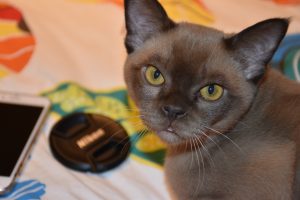 Mice can breathe easier as it appears their nemesis Felis silvestris catus might instead be a better choice for genome-wide association studies (GWAS) related to type 2 diabetes.
Mice can breathe easier as it appears their nemesis Felis silvestris catus might instead be a better choice for genome-wide association studies (GWAS) related to type 2 diabetes.
According to a review article in Animal Genetics, the Australian Burmese breed of domestic cat provides a naturally occurring genetic model of type 2 diabetes.
The breed in Australia, New Zealand and Europe has four times the incidence of feline diabetes mellitus (FDM) than other breeds – ostensibly due to inherited derangements in lipid metabolism.
“This geographically based breed predisposition parallels familial and population clustering of type 2 diabetes in humans,” the article said.
The review authors said a wide range of genomic resources, including a dense SNP map and whole genome sequencing, are available for the domestic cat.
Burmese cats also exhibit signs of low genetic diversity associated with inbreeding.
“FDM and T2D share key features involve in the complex interplay between genetic, metabolic and acquired factors that define the diabetic state.”
“Given these genetic features, the Burmese breed is well placed as a population isolate in identifying and refining genetic association signals that lead to identifying susceptibility loci and novel disease pathways.”
Rodents – “typically induced, single gene models” – were better used to study the specific roles of genes of interest, they added.